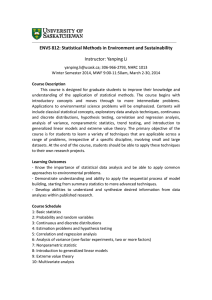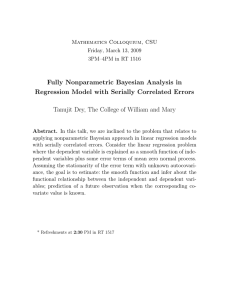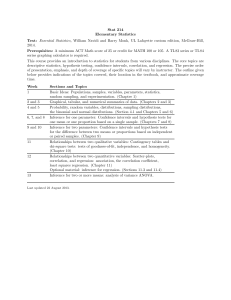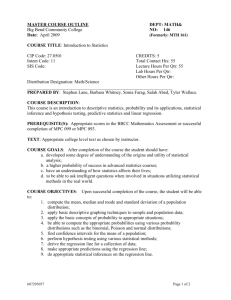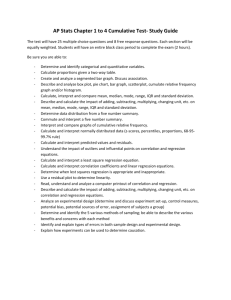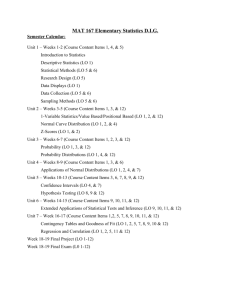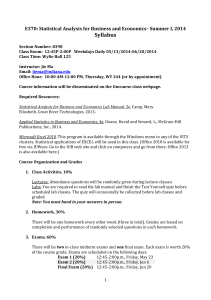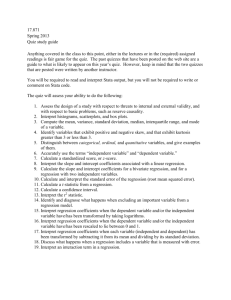BBA 201 Master Syllabus draft - nau.edu
advertisement
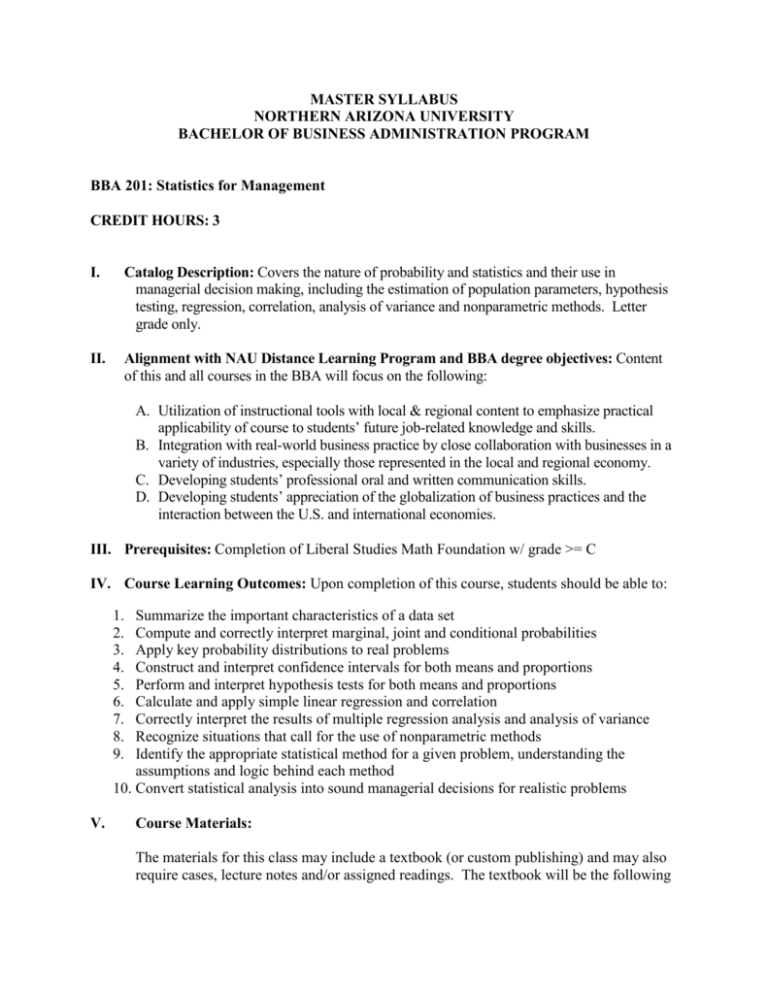
MASTER SYLLABUS NORTHERN ARIZONA UNIVERSITY BACHELOR OF BUSINESS ADMINISTRATION PROGRAM BBA 201: Statistics for Management CREDIT HOURS: 3 I. Catalog Description: Covers the nature of probability and statistics and their use in managerial decision making, including the estimation of population parameters, hypothesis testing, regression, correlation, analysis of variance and nonparametric methods. Letter grade only. II. Alignment with NAU Distance Learning Program and BBA degree objectives: Content of this and all courses in the BBA will focus on the following: A. Utilization of instructional tools with local & regional content to emphasize practical applicability of course to students’ future job-related knowledge and skills. B. Integration with real-world business practice by close collaboration with businesses in a variety of industries, especially those represented in the local and regional economy. C. Developing students’ professional oral and written communication skills. D. Developing students’ appreciation of the globalization of business practices and the interaction between the U.S. and international economies. III. Prerequisites: Completion of Liberal Studies Math Foundation w/ grade >= C IV. Course Learning Outcomes: Upon completion of this course, students should be able to: 1. 2. 3. 4. 5. 6. 7. 8. 9. Summarize the important characteristics of a data set Compute and correctly interpret marginal, joint and conditional probabilities Apply key probability distributions to real problems Construct and interpret confidence intervals for both means and proportions Perform and interpret hypothesis tests for both means and proportions Calculate and apply simple linear regression and correlation Correctly interpret the results of multiple regression analysis and analysis of variance Recognize situations that call for the use of nonparametric methods Identify the appropriate statistical method for a given problem, understanding the assumptions and logic behind each method 10. Convert statistical analysis into sound managerial decisions for realistic problems V. Course Materials: The materials for this class may include a textbook (or custom publishing) and may also require cases, lecture notes and/or assigned readings. The textbook will be the following or a similar text: Statistics for Business & Economics (12th) by Anderson, Sweeney, Williams, Camm and Cochran (Cengage, ISBN 1-133-27453-6). VI. Teaching Method: The teaching methods for this course may include, for example, lecture/discussion, application exercises, team projects, case analyses, video presentations, and guest speakers. Delivery will be in-person, online or via hybrid methods. VII. Evaluation Tools: Evaluation of student performance may be accomplished by means of examinations, quizzes, team projects, homework assignments, written assignments, presentations or participation. For example: Exams (3) 60% Weekly quizzes (10) 10% Team Case Analyses (3) 10% Weekly homework problem sets (10) 10% Presentation 10% Total: 100% Grade A B C D F Points Achieved 90% - 100% 80% - 89.9% 70% - 79.9% 60% - 69.9% less than 60% VIII. Course Content: A. Course Topics: 1. 2. 3. 4. 5. 6. 7. 8. 9. Populations versus samples and statistical inference Descriptive statistics – calculation and presentation Probability Discrete and continuous probability distributions Sampling and sampling distributions Confidence intervals Hypothesis testing, including Type I and Type II errors and P-Values Simple linear regression and correlation (Briefly) Multiple regression, analysis of variance and nonparametric methods B. Perspectives for Business Decisions: International/Global Ethical Issues Political Issues Social Issues Legal/Regulatory Issues Environmental Issues Technology Issues Demographic Diversity Minimum Number of 50 Minute Periods Devoted to Topic 1 1 1 1 1 Required Graded Work Other Than Exams? 1 1 No No 1 No No No No No No Note: As this is primarily a math class, the “perspectives” above would be achieved largely from the context of the various mathematical examples, homework problems and/or case studies. This section is intended to encourage a broad array of examples. C. Interdisciplinary Skills: Oral Communication Written Communication Critical Thinking Working in Teams Required Graded Work Other Than Exams? No Yes Yes Yes
